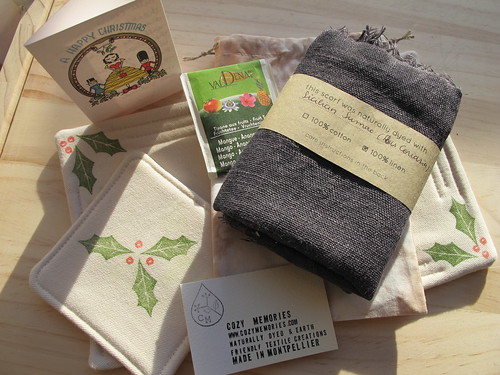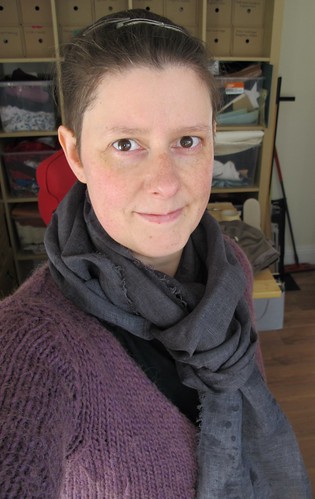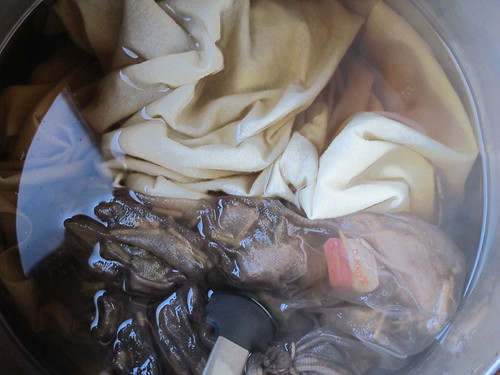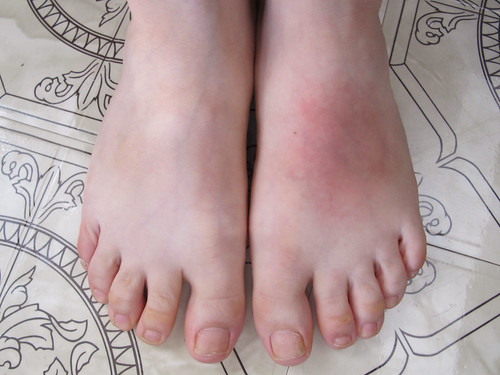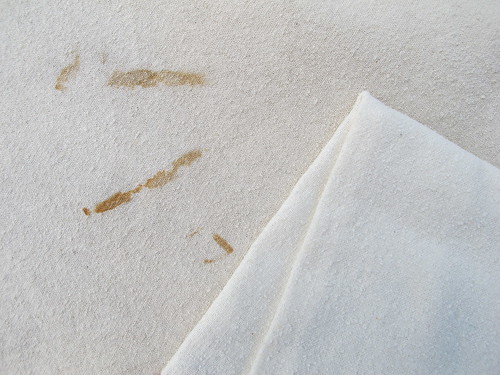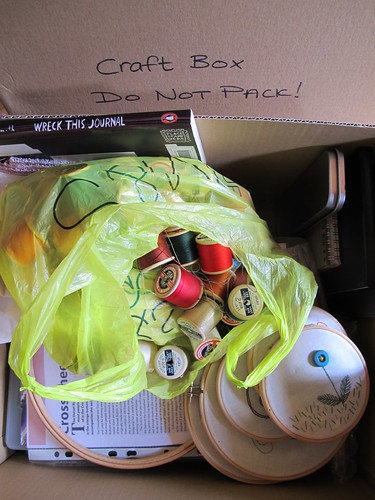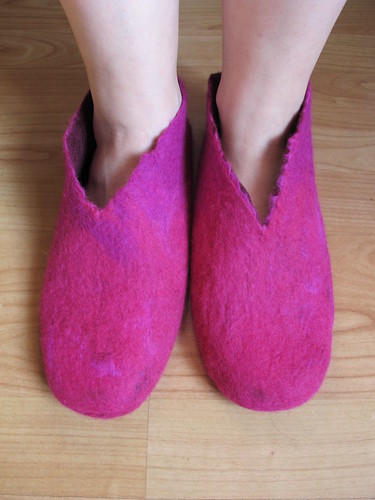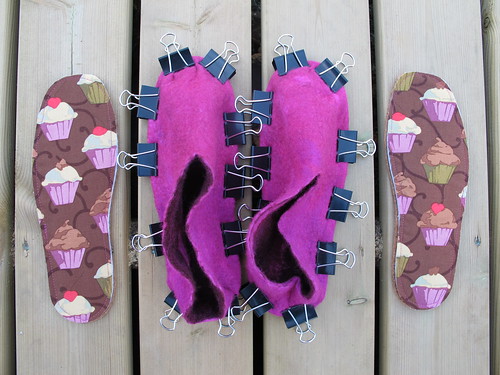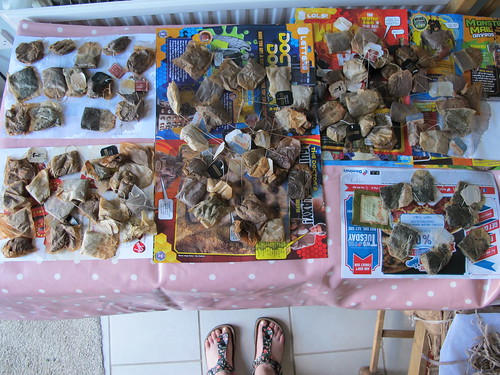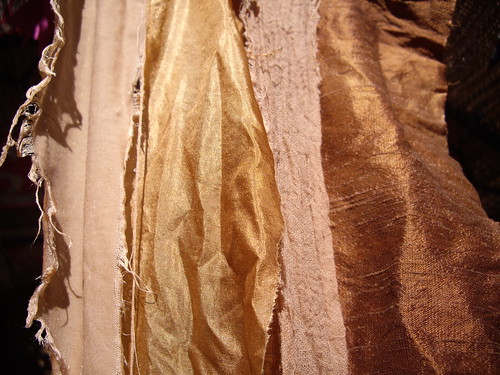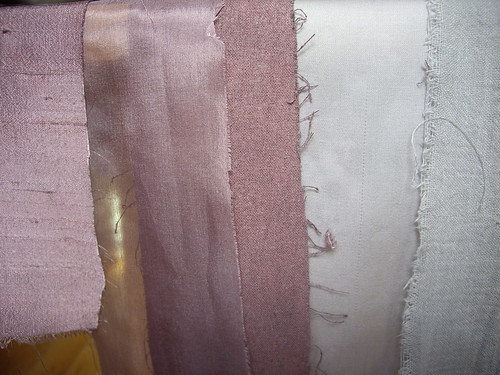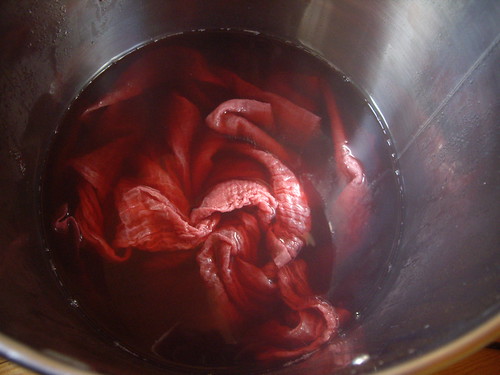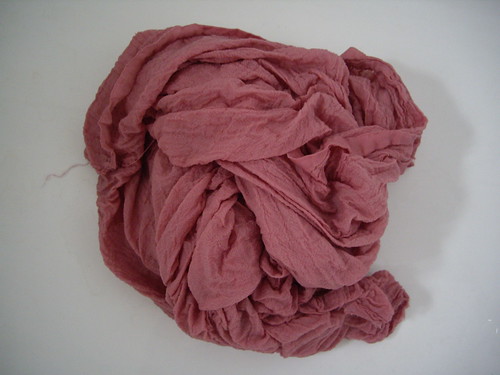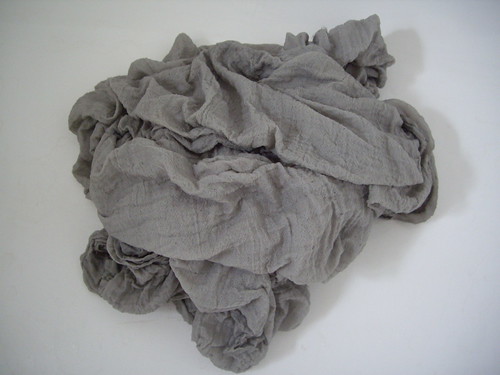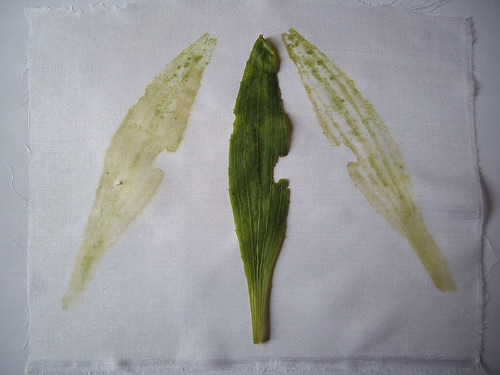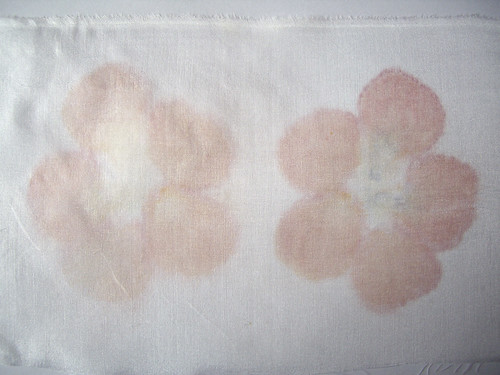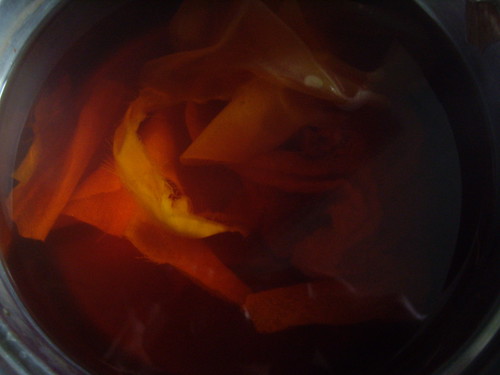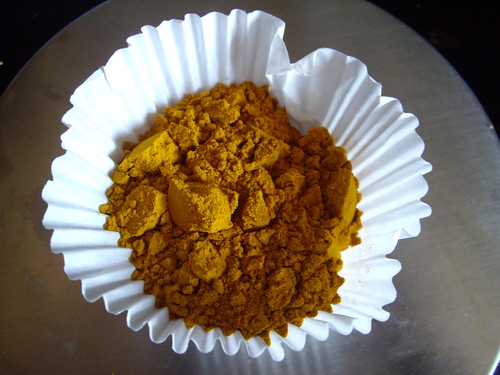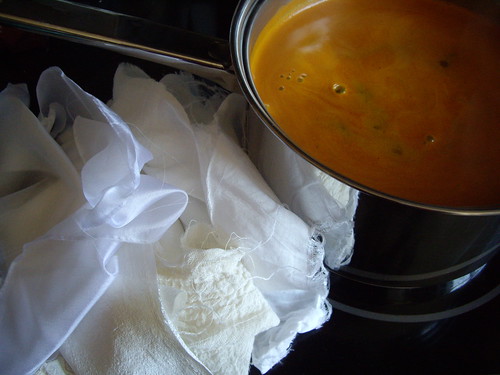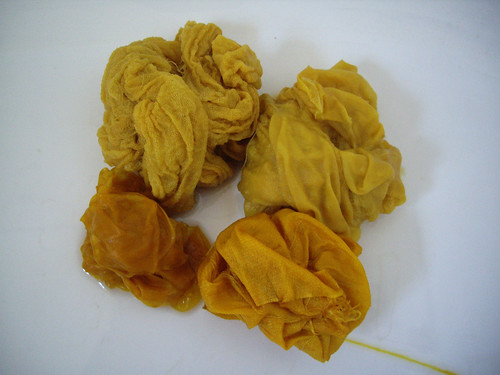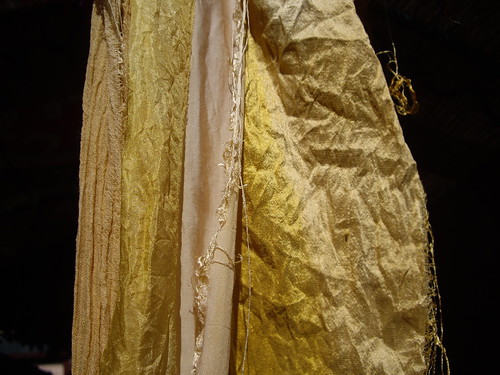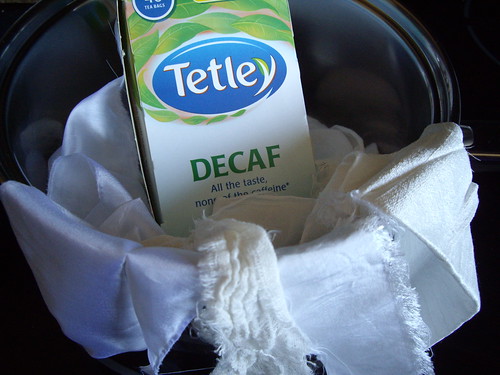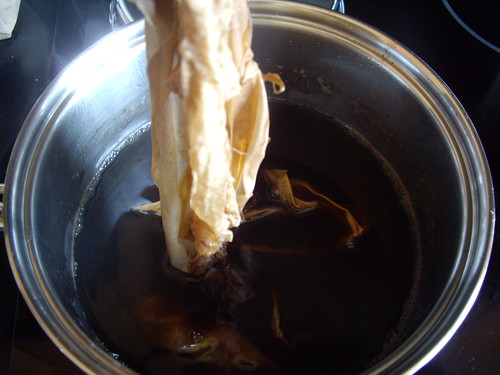Well, isn’t this irritating? One freshly-dyed white t-shirt (Dylon Rosewood Red, not as lurid as it appears in these photos!) complete with stain that, annoyingly, wasn’t visible when the t-shirt was white. Now that the t-shirt’s dyed I can’t use a stain-removal product or scrub at the fabric, as that will most likely take off the dye as well as the stain. My only option now is to cover it up with something.
That’s better! A bit out of focus, but these are floral motifs carefully snipped from a small piece of Lancaster & Cornish organic cotton lace. I’m hoping there might be just enough loose dye still in the fabric that a little bit of it leaches out into the lace the next time it’s washed, just to soften the cream colour a little bit. But if that doesn’t happen, no worries, because the cream lace makes the white stitching on the t-shirt look as bit more as though it’s supposed to be white on purpose.
Knowing that the stitching wouldn’t take the dye was the main reason I chose the colours I did for dyeing my trousers – beige to dark brown, and pale blue to dark grey. With the contrast stitching they just look like smart, lightweight jeans. I also have plans for mending all of my funny-coloured trousers in the future. I’m on the look-out for small pieces of Liberty print fabrics that I can use for patching, and maybe for adding a hint-of-a-print on the turn-ups. Hopefully that will be a long way off yet though!
While I was mending things, I made the decision to take two of my most beloved t-shirts out of my wardrobe. This Suzanne Vega t-shirt is from the very first gig I ever went to – at the Wulfrun Civic Hall in Wolverhampton, on April 8th 1993. (We were sitting three rows from the back, and Suzanne Vega had a cough.) Having been worn pretty often over the past 22 years, although recently relegated to hospital wear or pyjamas only, it’s safe to say that this t-shirt is very much past its best! But there was no way on earth I was going to throw it out, and it’s really not fit to give to a charity shop, so it was the work of about five minutes to turn it into a cushion. The tour dates are on the back.
The same fate befell my other favourite t-shirt, also purchased in 1993, this time from Forbidden Plant in Hanley. I didn’t own any other green clothes, and it was far too big for me (being a men’s size XL), but I just had to have it. It saw me through art college and University, but again, it’s not even really fit to wear as pyjamas any more. But, because it was still in my wardrobe, it kept mysteriously finding its way out and onto my body. Drastic measures clearly had to be taken. So, cushion it is.
(No, I don’t iron my bedding. Sorry, Mum!)
Making these two cushions from my favourite t-shirts has made me wonder though – are there any items in my current wardrobe that I can imagine myself still wanting to keep in 22 years’ time?!





